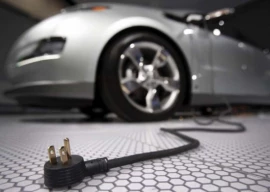
The consumer electronics market – defined as including computing devices, mobile handsets and television sets – is projected to reach $1.6 billion by the end of 2010. It is expected to grow at approximately 11 per cent a year to reach $2.4 billion by 2014, according to BMI in a research report released on Monday.
Yet analysts reckon that the market’s true potential is depressed by a variety of factors, some of which are the responsibility of the government. For instance, poor protection for intellectual property rights means that counterfeit electronics items are rampantly available in the market, driving down quality as well as sales of legitimate brands.
High taxes on consumption, such as sales taxes and excise duties, also drive up prices and depress demand for consumer electronics, particularly at a time of slow economic growth. Sales taxes on most items reach as high as 19 per cent and duties on some imported items are even higher. This is in addition to the 19 per cent sales tax that cellular phone users pay for their service.
Computers accounted for around 18% of Pakistan’s consumer electronics spending in 2009. BMI forecasts Pakistan’s domestic market computer sales (including notebooks and accessories) of $283 million in 2010, up from $264 million in 2009. It is expected to grow at a rate of 7 per cent to reach $391 million by 2014. Government plans to reduce taxes on imported computers are likely to be put on hold in the wake of the recent devastating floods.
Television sets account for around 40 per cent of Pakistan’s consumer electronics spending in 2008. The television set market is projected at $632 million in 2010. The market is expected to grow at 11 per cent to a value of $946 million by 2014. However, the growing availability of smuggled colour televisions is an inhibitor to the growth of the market.
Mobile handset sales are expected to grow at 16 per cent to 22 million units in 2014, as mobile subscriber penetration reaches 99 per cent. Revenue growth will be slower due to lower average selling prices of mobile handsets, with most sets sold at under $40.
Yet the government is not solely to blame for the industry’s relative underperformance. Distribution channels in much of urban Pakistan remain weak, with very few large retail outlets that offer consumers a wide array of choice across the full spectrum of electronics as well as brands. Most stores in Pakistan traditionally specialise in a specific subsector, such as mobile handsets or computers rather than the full range of products. Many stores are even more specialised, offering only one type of product from a single brand manufacturer.
There is also a dearth of consumer credit. The market for consumer products took off from 2003 to 2007 under the Musharraf administration when interest rates were low and banks lent freely for consumer goods. However, as the credit crunch of 2008 struck, interest rates skyrocketed, the ratio of nonperforming consumer loans increased, forcing banks to cut back on their consumer lending portfolio.
Published in The Express Tribune, September 28th, 2010.


1729662874-0/One-Direction-(1)1729662874-0-165x106.webp)

1732170891-0/BeFunky-collage-(79)1732170891-0-165x106.webp)












COMMENTS
Comments are moderated and generally will be posted if they are on-topic and not abusive.
For more information, please see our Comments FAQ